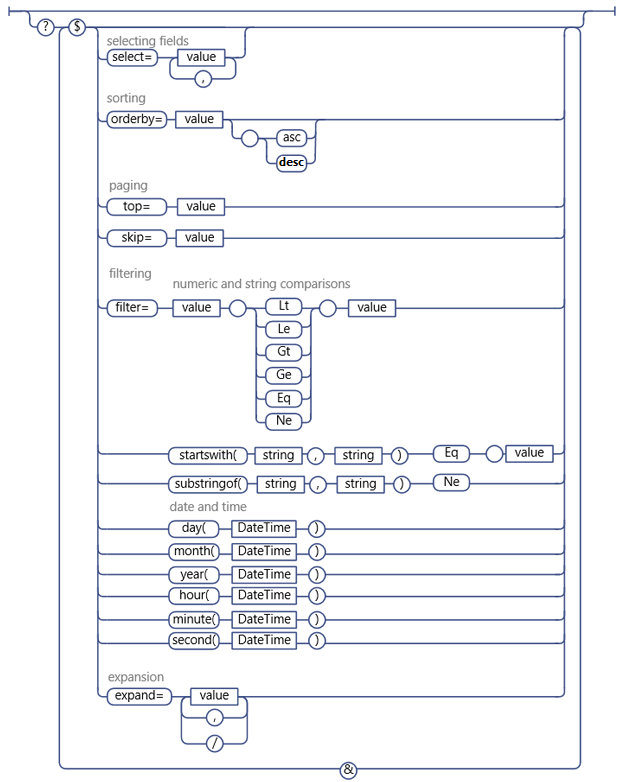- All of Microsoft
How to Use Power Automate Filter Query
Master Power Automate: Optimize SharePoint workflows with smart filter queries! Learn the tricks for item retrieval.
Filtering your SharePoint Get Items action using OData within Power Automate has just gotten simpler! Our latest video tutorial breaks down the complexities of creating OData filter queries. We explore how different SharePoint column types such as Text, Choice, Dates, Person, and Lookup columns can be utilized along with various operators like equals, less than, and greater than.
- Filter Query Expression Editor in Power Automate simplifies filter query syntax.
- Demonstrating filter queries for different SharePoint column types.
- Guide on utilizing various comparison types within filter queries.
- Using Filter Query on starts with, equals, search, and more.
- Multitude of Power Automate filter query examples showcased.
- Complex filter queries with multiple conditions are explained.
- Instruction on sorting and filtering SharePoint data in Power Automate.
- Considerations for null checks and querying different SharePoint columns.
- Date current month query and dynamic odata queries in Power Automate.
- Dynamic filter queries for managers or direct reports in Active Directory.
This insightful video about Power Automate includes a guide to the new Filter Query Expression Editor which provides a user-friendly graphical interface. It illustrates how to construct filter queries using starts with, equals, and contains options. Moreover, the video showcases multiple conditions in filter queries to demonstrate the robust capabilities of Power Automate.
Understanding Power Automate and Its Filter Query Feature
Power Automate is an exceptionally potent automation tool for tasks and processes. It can utilize the filter query feature, enabling users to retrieve items from SharePoint, SharePoint Online, and other sources using OData Power Automate filter query syntax. After presenting a concise synopsis of Power Automate, this article shall expound upon the notion of Power Automate filter query and explicate its potential application in automating the retrieval of items via filter query from a SharePoint list or alternative repositories.
In addition, we shall explore the utilization of the Get Items action in Power Automate and the implementation of filter queries to refine the items according to various criteria. To accomplish this, we shall employ the Power Automate filter query field and implement operators including EQ, GT, and Startswith within the filter queries. In conclusion, we shall deliberate on the significance of employing the Power Platform for item filter queries.
Introduction to Power Automate Filter Query
Power Automate Filter Query is the definition of Power Automate Filter Query. Formerly referred to as Microsoft Flow, Power Automate is a cloud-based software application that enables non-developer users to create and automate workflows and tasks across multiple applications and services. An OData system query option, the Power Automate Filter Query enables users to apply a filter to the data during a particular operation, such as "Get items" or "Get rows."
When working with SharePoint, users might, for instance, retrieve data from a SharePoint list using the "Get items" action. However, when dealing with a substantial volume of data, it may be more time-efficient and effective to retrieve each item individually. The power automat filter query is utilized in such situations. By utilizing the filter query, individuals have the ability to delimit the data retrieved from the list in accordance with their particular specifications.
Examples and Methods of Filtering Data in Power Automate
To elucidate this point, let us contemplate an instance. You have applied a "Due Date" column filter to the SharePoint list in order to retrieve only items that are past their due date, which is today or later. One possible approach is to employ a filter query known as "Due Date ge '@{utcNow()}'" to retrieve exclusively those items whose "Due Date" is equal to or exceeds the current date and time (ge). This improves upon the efficiency of filtering items in your flow after retrieving them all.
We have enumerated the various methods for filtering data in Power Automate. Eliminate Query: This option, as described previously, permits filtering of data at the source. It is robust, effective, and capable of handling complex filtering conditions. Nevertheless, expertise in the query language and capability to automate the OData filter query protocol is necessary. Errors of syntax in the filter query may result in "Invalid filter clause" notifications.
Step-by-Step Guide to Using Filter Query in Power Automate
How to Use a Filter Query in the Power Automate Get Items Action: In order to utilize a filter query within the Get Items action of Power Automate, it is necessary to apply specific conditions to a SharePoint list from which you wish to retrieve items. Instructions in detail for utilizing
Filter Query: Step 1 - Obtain a Power Automate login.

Step 2: Log in to Power Automate. In the menu on the left, select "Create" once you have logged in. Establish an automated power flow in Step 3. From the options provided, "Instant Cloud Flow" must be chosen. Fourth Step: Instant Cloud Flow - Give your flow a name and choose a trigger. The trigger may be anything, contingent on the application. For example, "Initiate a flow manually."

Step 5: Define a flow name and choose a trigger. Once the desired trigger has been selected, click the Create button that appears below. Step 6: Click Create Flow - You have successfully created a manual trigger flow; to add a new trigger, click "+ New step" in the following step. Establish a trigger flow manually. Microsoft Power Automate Trigger Conditions: An Example-Based Guide is suggested reading.
Illustrative Cases and Effective Use of Power Automate Filter Query
Step 7: Select "Get items" after conducting a search for it. Acquire items via SharePoint. Step 8: Select, in the "Site Address" field, the SharePoint site that contains your list. Step 9: Choose the SharePoint site. Please indicate the list from which you wish to retrieve the items in the "List Name" field. Choosing the list in Step 10.
In the "Filter Query" field of this final step, you can enter the odata filter query that you wish to automate. This is a straightforward an

Illustrations within the video highlight supported OData query options such as numeric and string comparisons, as well as date and time functions. Finally, the video encourages viewers to further explore the SharePoint REST service, OData resources, and develop SharePoint Add-ins for a comprehensive understanding of the capabilities offered by Power Automate’s integration with SharePoint.
Power Automate and OData Integration
Power Automate's deep integration with SharePoint via OData allows for a refined approach to data handling and workflows. The ability to define explicit queries to control data retrieval and processing plays a fundamental role in automating complex tasks within organizations. As SharePoint evolves to offer more powerful REST services, Power Automate continues to be an essential tool for efficiency and productivity, leveraging the detailed query control enabled by OData. Understanding this integration helps users, and developers alike, create more responsive and intelligent workflows to suit a multitude of business requirements.

SharePoint Filter Query Power Automate, Get Items Action, SharePoint Online Filter Query, Power Automate SharePoint Integration, Optimize SharePoint Get Items, SharePoint List Filter Power Automate, Easy Filter Query SharePoint, Automate SharePoint List Retrieval, SharePoint Query Optimization Power Automate, Simplify Power Automate SharePoint Query
